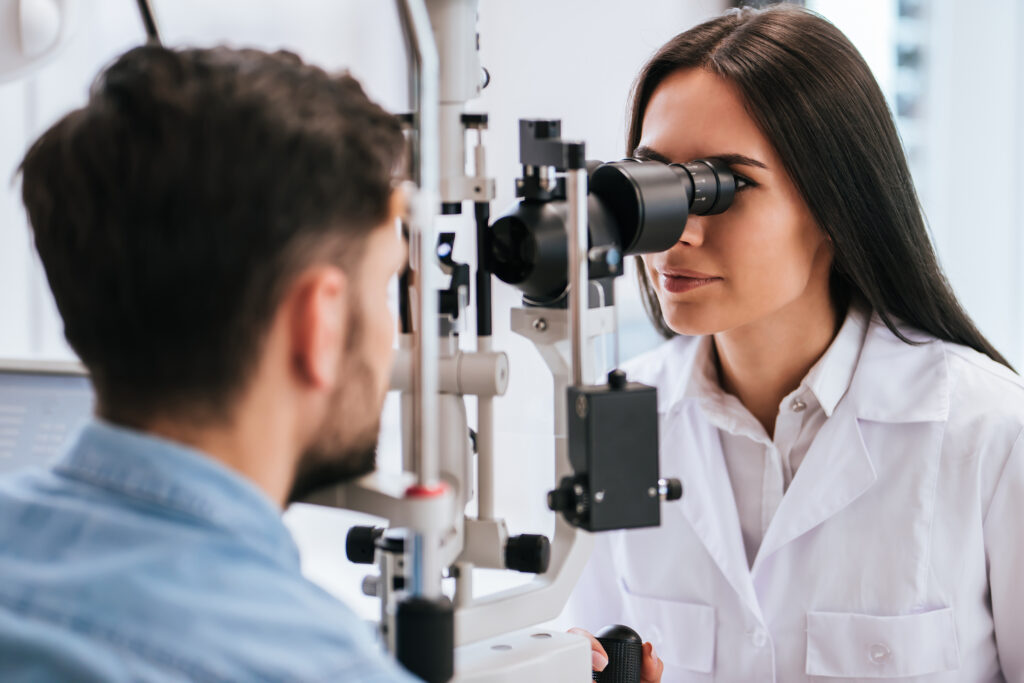
Diabetes affects the tiny blood vessels in the eye, which can leak fluid into the central retina (the part of the eye that provides sharp vision). This can lead to macular edema.
Diabetic macular edema is a serious complication of diabetes that can cause vision loss. Effective treatment is available that can maintain vision or even restore lost sight.
Diagnosis
Diabetes causes damage to blood vessels in the eye, which can lead to diabetic macular edema (DME). Consistently high blood sugar levels weaken connections between cells in small blood vessels called capillaries and they begin to leak fluid. This can cause the center of the retina, called the macula, to swell and blur vision. DME is a type of diabetic retinopathy and it occurs at any stage of diabetes, but it usually develops as the disease progresses.
It's important to schedule regular, dilated eye exams so that your doctor can spot any changes. If left untreated, DME can cause vision loss. Keeping your HbA1c, blood pressure, cholesterol and lipids at recommended levels can help prevent or delay the onset of DME.
DME can be distinguished from wet macular degeneration by the location of the swelled area in the retina, and the amount of swelling in the macula. It is also more likely to occur in patients with type 2 diabetes and it is associated with a longer history of the disease and higher HbA1C levels.
Symptoms
Diabetes affects blood vessels in the retina, the light sensitive layer in the back of the eye. Over time, persistently high blood glucose levels damage these small blood vessels. They may leak fluid or form tiny bulges called microaneurysms, which can cause swelling of the macula and blur vision. This is known as diabetic macular edema (DME). DME can develop at any stage of diabetes and is a major risk factor for blindness.
DME is a major complication of diabetes and leads to progressive central vision loss. This can make everyday tasks more difficult, such as reading or driving. It also impacts your quality of life as it can lead to occupational disability.
Your eye care specialist can detect DME through a series of tests including optical coherence tomography, fluorescein angiography and Amsler grid testing. This is why it is important to follow your eye exam schedule and manage your blood glucose to prevent or catch DME early.
Treatment
If left untreated, diabetic macular edema can lead to vision loss. Your doctor can treat this complication with laser therapy. He or she will use an anesthetic eye drop to protect your pupil and then apply a laser light pulse in the center of your retina to seal leaky blood vessels and slow new, abnormal blood vessels from growing. This is called focal laser treatment and can help prevent macular edema from getting worse.
Persistently high blood glucose levels over time damage the tiny blood vessels in the retina, which is the thin layer at the back of your eye that converts light into sight. When these blood vessels break down and start to leak, fluid builds up in the area of your eye that gives you sharp, straight-ahead vision, called the macula. This condition is called diabetic macular edema, or DME.
Your body responds to this fluid buildup by making more vascular endothelial growth factor (VEGF), a protein that helps grow blood vessels. These leaking blood vessels cause the macula to swell and thicken, which can blur your vision.
Prevention
People with diabetes have a higher risk of DME, and untreated it can lead to blurry vision. Managing blood glucose, getting regular eye exams and following healthy habits can help prevent or catch it early.
Constant high blood sugar weakens small blood vessels in the retina, which sits at the back of your eye and turns light into signals that go to your brain so you can see. When the blood vessels leak fluid into the retina, it causes the eye to swell or thicken, called macular edema. This can interfere with your central vision, making it hard to read, drive or recognize faces. It also increases your risk of developing other serious eye problems like glaucoma and cataracts. It’s especially important to have a yearly dilated eye exam to spot any potential problems early. A dilated eye exam involves drops that open up the pupil and let doctors see inside the eye.





